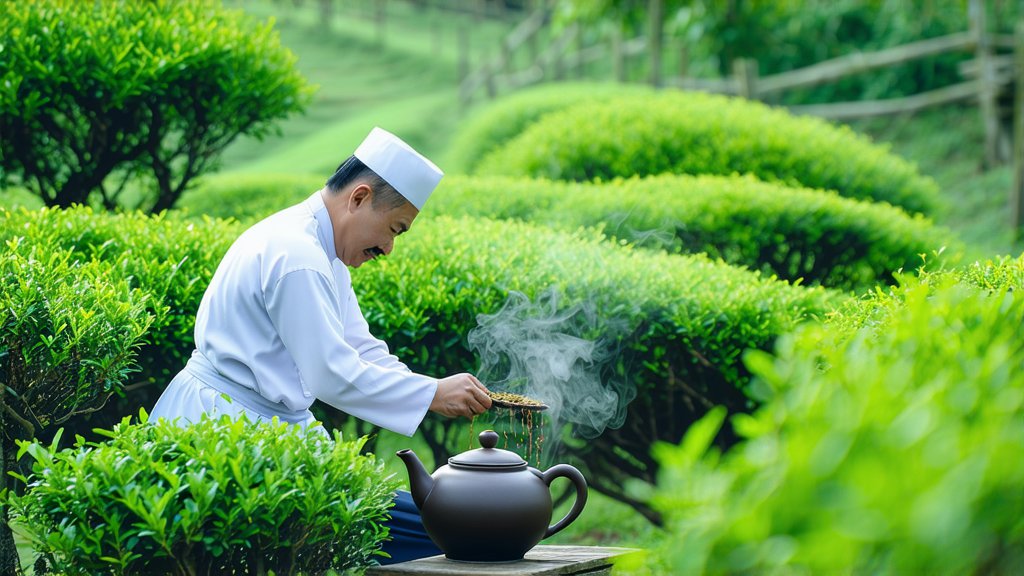
The world of tea is vast and varied, but few teas capture the imagination and palate quite like Keemun Black Tea. This exquisite variety hails from the picturesque landscapes of Qimen County in Anhui Province, China, and has earned its place as one of the most celebrated teas globally. With a history steeped in tradition, a unique production process, and a flavor profile that stands out even among the finest teas, Keemun Black Tea is a testament to the artistry and dedication of Chinese tea culture.
Historical Background
Keemun Black Tea, also known as Qimen Black Tea, traces its roots back to the Tang Dynasty (618-907 AD). However, it gained widespread recognition during the 19th century when it became a favored tea for the British Royal Family. The name "Keemun" is derived from the local dialect of Qimen County, where the tea is predominantly produced. Over centuries, Keemun Black Tea has been synonymous with quality and sophistication, often being referred to as the "Champagne of Teas."
Varieties of Keemun Black Tea
Keemun Black Tea is not monolithic; rather, it encompasses several sub-varieties, each with its own distinct characteristics. The primary types include:
- Keemun Mao Feng: Known for its slightly twisted leaves and rich, full-bodied flavor.
- Keemun Hao Ya: Recognized by its fine, golden tips and smooth, mellow taste.
- Keemun Gong Fu: Characterized by its robust, malty flavor and deep amber color.
- Keemun Xuan Hong: A more modern variation with a sweeter, lighter profile.
Each variety offers a unique sensory experience, yet they all share the hallmark smoky undertones that define Keemun Black Tea.
The Craft of Production
The journey from leaf to cup for Keemun Black Tea is an intricate process that involves several key steps:
- Withering: Freshly picked tea leaves are spread out to wilt under the sun or in shaded conditions. This process reduces moisture content and prepares the leaves for rolling.
- Rolling: The withered leaves are then rolled to break down cell walls and release essential oils, which contribute to the tea's aroma and flavor.
- Fermentation: Rolled leaves are allowed to ferment, a process that develops the tea’s characteristic color and flavor.
- Firing: The partially fermented leaves are subjected to high temperatures to halt fermentation. This step imparts the quintessential smoky flavor to Keemun Black Tea.
- Sorting and Grading: After firing, the tea leaves are sorted based on size and quality. High-grade leaves, known as "Golden Pekoe," are particularly prized.
- Aging: Some varieties of Keemun Black Tea undergo a period of aging to further refine their flavors and aromas.
Appreciating Keemun Black Tea
To truly appreciate Keemun Black Tea, one must engage in the art of tea tasting, or "nosing and sipping." Here’s how to do it:
- Warm the Teapot: Begin by warming your teapot with hot water to maintain the optimal brewing temperature.
- Measure the Tea: Use about one teaspoon of tea leaves per cup of water. For a more intense flavor, increase the amount of leaves.
- Boil the Water: Bring fresh water to a boil and let it cool slightly to around 90-95°C (194-203°F).
- Steep the Tea: Pour the hot water over the tea leaves and let them steep for 3-5 minutes, depending on your taste preference.
- Observe the Color: A well-brewed cup of Keemun Black Tea should have a bright, amber hue.
- Inhale the Aroma: Before sipping, take a moment to appreciate the tea's complex aroma, which includes hints of smokiness and sweetness.
- Sip and Savor: Take small sips, allowing the tea to coat your palate and savor the interplay of flavors—sweet, smoky, and slightly fruity.
Conclusion
Keemun Black Tea is more than just a beverage; it is a cultural treasure that embodies centuries of Chinese tea-making heritage. From its storied past to its meticulous production process and distinctive taste, Keemun Black Tea continues to captivate tea enthusiasts around the world. Whether you are a seasoned connoisseur or a curious newcomer, understanding and appreciating this remarkable tea enriches both the mind and the senses. So next time you enjoy a cup of Keemun Black Tea, allow yourself to be transported to the misty mountains of Qimen County and experience a piece of history in every sip.